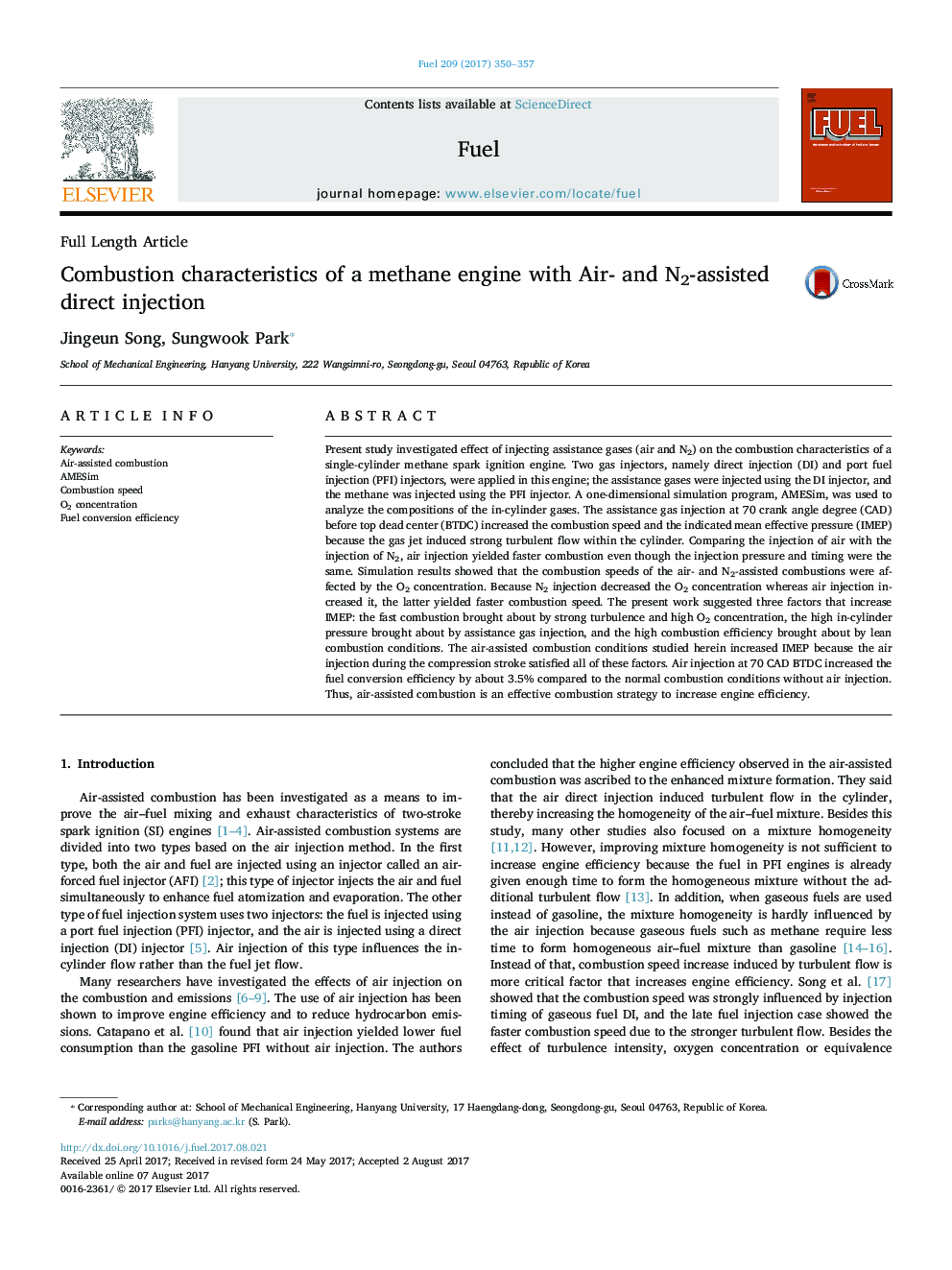| Article ID | Journal | Published Year | Pages | File Type |
|---|---|---|---|---|
| 6473902 | Fuel | 2017 | 8 Pages |
â¢Air-assisted combustion yielded higher efficiency than N2-assisted combustion.â¢1D simulation code (AMESim) was used to analyze composition of in-cylinder gases.â¢Combustion speed, O2 concentration, and air-fuel ratio affected engine efficiency.â¢Air-assisted combustion increased fuel conversion efficiency by about 3.5%.
Present study investigated effect of injecting assistance gases (air and N2) on the combustion characteristics of a single-cylinder methane spark ignition engine. Two gas injectors, namely direct injection (DI) and port fuel injection (PFI) injectors, were applied in this engine; the assistance gases were injected using the DI injector, and the methane was injected using the PFI injector. A one-dimensional simulation program, AMESim, was used to analyze the compositions of the in-cylinder gases. The assistance gas injection at 70 crank angle degree (CAD) before top dead center (BTDC) increased the combustion speed and the indicated mean effective pressure (IMEP) because the gas jet induced strong turbulent flow within the cylinder. Comparing the injection of air with the injection of N2, air injection yielded faster combustion even though the injection pressure and timing were the same. Simulation results showed that the combustion speeds of the air- and N2-assisted combustions were affected by the O2 concentration. Because N2 injection decreased the O2 concentration whereas air injection increased it, the latter yielded faster combustion speed. The present work suggested three factors that increase IMEP: the fast combustion brought about by strong turbulence and high O2 concentration, the high in-cylinder pressure brought about by assistance gas injection, and the high combustion efficiency brought about by lean combustion conditions. The air-assisted combustion conditions studied herein increased IMEP because the air injection during the compression stroke satisfied all of these factors. Air injection at 70 CAD BTDC increased the fuel conversion efficiency by about 3.5% compared to the normal combustion conditions without air injection. Thus, air-assisted combustion is an effective combustion strategy to increase engine efficiency.
